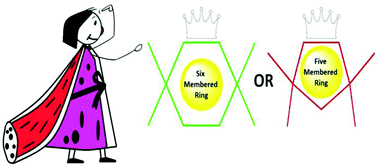Tailoring the selectivity of phenanthroline derivatives for the partitioning of trivalent Am/Eu ions – a relativistic DFT study†
Abstract
In the past few years, phenanthroline-based ligands have become an attractive target for the partitioning of trivalent actinides (Ac) from lanthanides (Ln) in nuclear waste management. However, designing efficient ligands for selectively trapping radioactive minor actinides requires complete knowledge of the structure–property relationship to understand the solvent extraction processes in a better way. Therefore, a series of CyMe4BTPhen (2,9-bis(5,5,8,8-tetramethyl-5,6,7,8-tetrahydro-1,2,4-benzotriazin-3-yl)-1,10-phenanthroline) derivatives with a five-membered aliphatic ring and a six-membered aliphatic ring have been considered and their complexes with americium and europium [ML(NO3)3 (L = 1–6)] are studied using scalar relativistic ZORA/DFT calculations. Herein, we envisage the effect of change of a six-membered aliphatic ring to a five-membered aliphatic ring along with the role of substitution of a phenol group on the CyMe4BTPhen ligand. All ligands show preferential binding towards Am3+ as compared to the Eu3+ ion. The calculated thermodynamic properties and the separation factors indicate that the five-membered aliphatic ring has the highest selectivity for the Am3+ ion. Energy decomposition analysis has been carried out to understand the total binding energy with its various energy components, while the nature of interactions between metal and ligand is addressed by QTAIM analysis. The results reveal that ligands with six-membered aliphatic rings and phenol substitution at the 5 and 6 positions are the best bet for stripping actinide ions compared to other designed ligands. In summary, this study offers insights into the structure–binding ability relationship to design efficient candidates for nuclear waste management.



 Please wait while we load your content...
Please wait while we load your content...